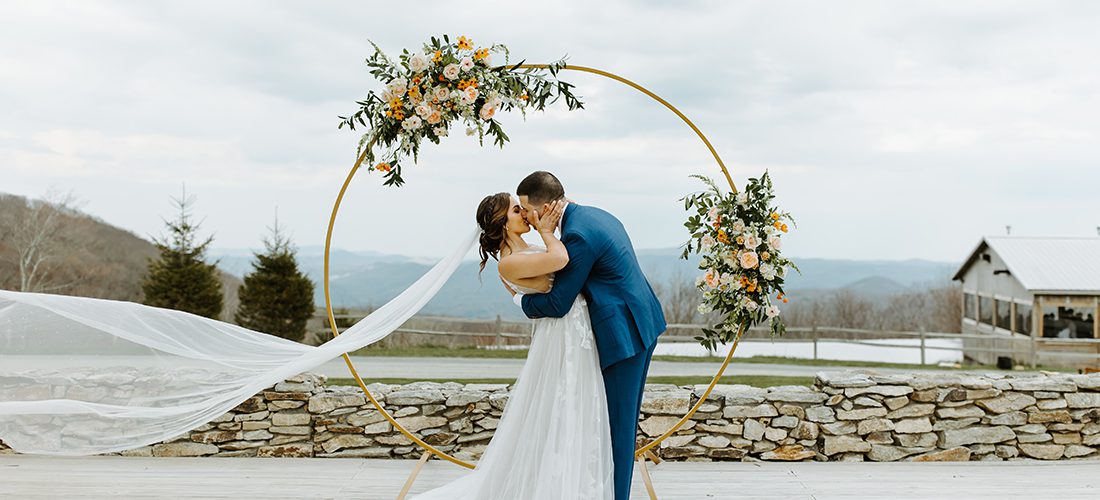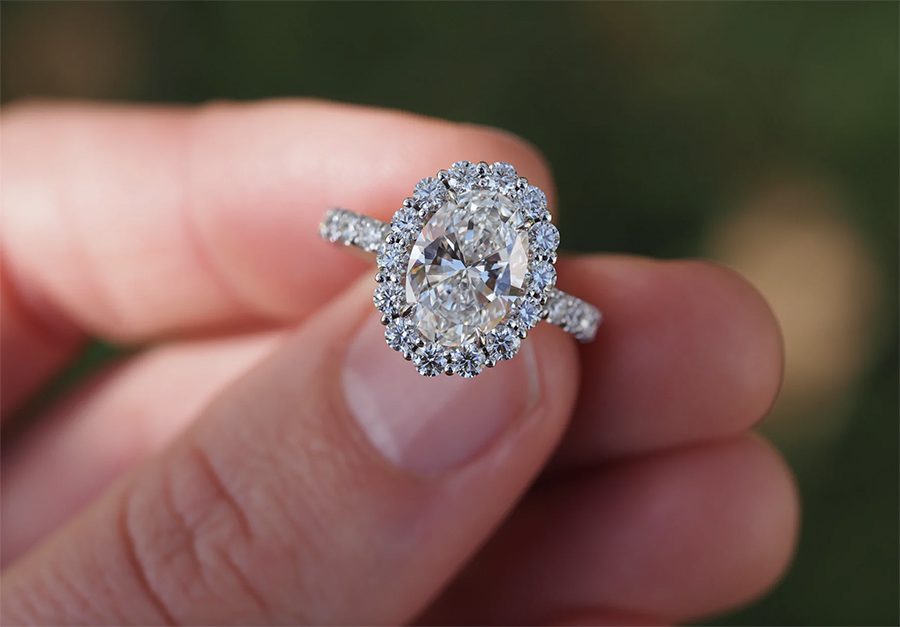Go green: How to plan a sustainable wedding
October 20, 2022

A few mindful modifications can make a big impact on the environment.
by Amanda Lea
Having an eco-friendly wedding is not a new concept, but it has certainly become more widely embraced in the last few years.
According to ZeroWaste, the average U.S. wedding produces 400 pounds of garbage and 63 tons of carbon dioxide. This means the disposable plastic forks you use for your buffet will likely still be around when your great-grandchildren tie the knot.
In the age of virtual vision boards and social-media montages, there can be a lot of pressure to have an “Insta-worthy” event. But style and sustainability can coexist without losing the magic of your big day.
If you’re not sure where to start, try connecting with a wedding-planning expert who specializes in making sure your event is the perfect blend of stunning and sustainable. One of those experts is Joelle Parks, owner of Joelle Parks Events.
After working in the wedding-planning industry for several years and seeing the amount of waste after a typical wedding, Parks was inspired to launch her own business in October 2020 to help conscientious couples plan their dream day. The core value of her company is to create less wasteful events and be as sustainable as possible, but Parks says it’s important to remember that this can look different for each couple.
“Some want to be as eco-friendly as possible, some just want some ideas of what to implement to be less wasteful,” Parks says.
From boho to black tie, Parks works with each couple to achieve the style they envision. “Being eco-friendly doesn’t lock you into a certain style,” she says. “You can have a traditional wedding at a country club or in uptown Charlotte and still be intentional with your impact [on the environment].”



Reduce, reimagine, reciprocate
There are several ways you can be intentional in your wedding planning to reduce your impact on the environment. If you’re just dipping your toe into the eco-friendly waters, Parks recommends asking one question: “What are we going to do with this after the wedding?” Whether it’s a dozen plastic table numbers or a personalized welcome sign, many single-use items will serve their one-day purpose and go straight to the dumpster after the event.
“Small tweaks go a long way,” Parks says. “You can reduce excess waste and unnecessary items and focus more on the experience.”
One of the most obvious areas of wedding waste is paper. Invitations, envelopes, RSVP cards, programs, menus and place cards are just a few of the paper products you encounter at a typical wedding. But you can save money and reduce waste by condensing the amount of things you have printed for your wedding.
That doesn’t mean ditching the invites and menus entirely, just reimagining how to share the same information in a more sustainable way. Use seed paper for your invitations so guests can plant them and grow wildflowers. Ask your caterer to hand letter the menu on a reusable chalkboard, or use custom cookies as place cards to serve double-duty as favors. Some couples even include QR codes on their invitations so guests can quickly access the wedding website for RSVPs, registries and lodging info.
Jennifer Duncan, owner and lead planner and designer with Flourish Wedding Design, not only helps her clients host a sustainable event, she also reduces the use of paper during the planning process. From email exchanges to digital presentations, Duncan and her team have found ways to utilize technology and reduce their paper trail.

When she first started in the industry, Duncan noticed a staggering amount of post-wedding trash bags full of floral foam — a single-use product that is harmful to the environment. She looked for alternatives to floral foam and discovered other ways to reduce wedding waste. She specializes in floral arrangements that use natural materials, such as chicken wire, that can be repurposed for multiple events.
Duncan also recommends using local florists for your wedding arrangements to minimize the environmental impact of having flowers delivered across long distances. (Bonus: The flowers will be fresher because they come straight from the grower.)
To help extend the life of your florals after the wedding, send flowers home with vendors and guests. Parks asks the couples she works with where they would like the flowers to be donated after the event. Most choose to have her drop the flowers off at a local nursing home. “This is another easy way to make an impact,” Parks says. “And you can do it with any style of wedding.”
To reduce waste in your food and beverage offerings, Parks suggests researching caterers to make sure they specialize in locally-sourced, seasonal goods. The more ingredients provided from local growers and farmers, the smaller your carbon footprint will be from transporting supplies over long distances. Reid’s Catering Co. serves the Boone area and specializes in creating innovative menus with the freshest ingredients. Gadabouts Catering also serves the High Country area, providing local fare for wedding venues in Valle Crucis, Banner Elk, Linville, Boone and Blowing Rock. In the Charlotte area, Roots Catering helps couples create a customized menu based on locally sourced ingredients and personal tastes.
Parks recommends letting your caterer know you want to be as waste-free as possible, and trust their guidance on servings. You can also ask what their policy is for surplus food. This can vary depending on the catering company and food-safety policies where your event is located. For example, Roots Catering uses Crown Town Compost – a Charlotte-based organization that uses qualifying food products to create nutrient-rich resources for soil and future plant growth in the community. It also donates surplus food to Feeding Charlotte, which collects fresh, unserved meals from restaurants and caterers and distributes them to local nonprofits who feed the hungry.
You can also be mindful about the single-use products you use. This includes everything from arbors to tablescapes. When Parks and her team wondered what couples did with items like cake stands, table numbers and welcome signs after the wedding, they were inspired to launch a rental line called Borrowed. Clients can choose decor and serving items from three style categories: “Sunset,” “Matte” and “Luxe.” Nothing in the collection is single-use — in fact, many of the items are from previous weddings Parks has planned.
“I wanted to be intentional about solving a problem in the industry, not just buying more stuff,” Parks says. “The goal in this collection is to cater to those items people are buying for similar wedding themes, but as rental options so they can be repurposed and reimagined instead of thrown away.”
Your venue choice is another way to be more eco-minded. Search for hotels and event spaces with Leadership in Energy & Environmental Design (LEED) certifications and Energy Star ratings. Whether it’s a picturesque vineyard, magnificent mountaintop or beachfront retreat, your venue can reflect your personality while minimizing decor and maximizing the photo ops.




Roots Catering photos
Spread the local love
Having an eco-friendly wedding isn’t just about the three R’s. It’s also about supporting the local economy. Fill gift boxes for out-of-towners with local specialties like Queen City Crunch pretzels, honey straws from Cloister Honey, or a bag of beans from Undercurrent Coffee. For favors, send guests home with potted herbs or handmade terrariums from PlantHouse or custom cookies by Suárez Bakery.
Something old, something new


Consider working with a jeweler to create a stunning engagement ring and meaningful wedding bands without increasing your carbon footprint. Perry’s Diamonds & Estate Jewelry in SouthPark specializes in creating custom rings from family keepsakes. “We like to tell people that we were ‘green’ before it became popular,” says Hadley Perry, Perry’s chief operating officer. Established in 1977 by Ernest Perry and his wife Priscilla, the entire business model is based on sustainability, with an array of vintage and antique pieces in the showroom and jewelers who breathe new life into treasured heirlooms. “The fun is in the treasure hunt,” Hadley Perry says. “We guarantee when you come in you’ll find something you’ve never seen before.”
These modifications will not only have a lasting impact on the environment, they are representations of what’s important to you and your partner on the most memorable day of your lives. -SP
Find more wedding inspiration at Weddings by SouthPark.



